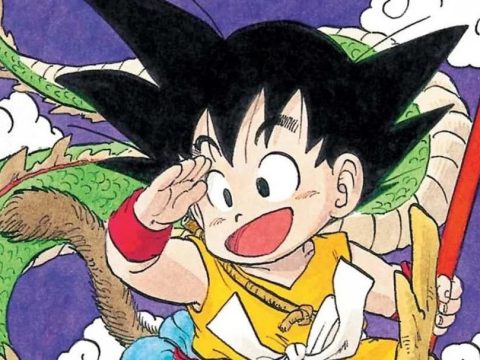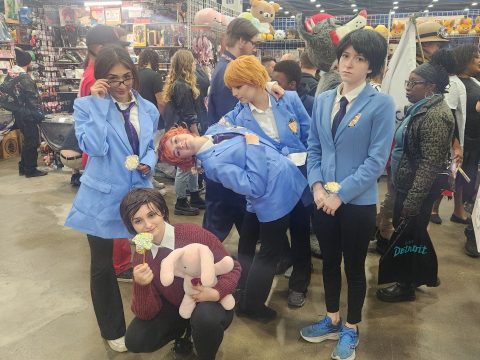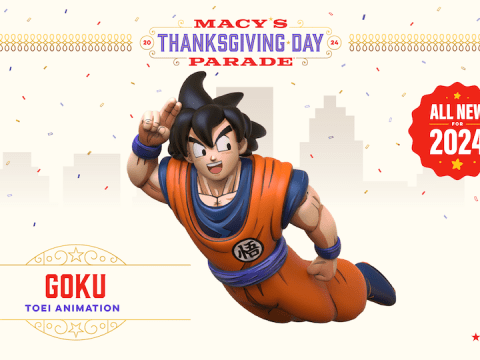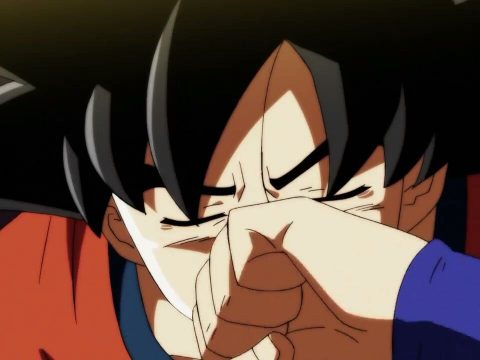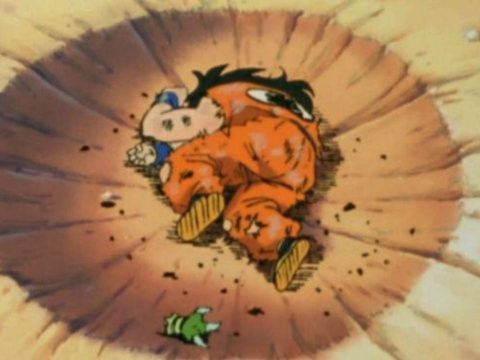
In the mid 1990s at the height of Street Fighter II mania, I imported a few Japanese Super Nintendo games. Before I even saw a single episode of Ranma ½ or Dragon Ball Z, I had the fighting games for them. Like most anime to videogame adaptations, they weren’t especially great, and it baffled me that DBZ: Super Butoden 3 actually had fewer features than part 2, most memorably the story mode. Fifteen years later, it seems that the more things change the more they stay the same.
DBZ: Burst Limit is the latest videogame fighter based on Akira Toriyama’s most well-known work about flying around, screaming, and hitting stuff. Released on both the Playstation 3 and Xbox 360, you can now bask in the glow of Goku and Vegeta’s cel-shaded spiky hairstyles in 3D high definition•literally! Like the last several DBZ games, you can also select between the English AND Japanese audio. Sadly, the text always matches the English, but I wish more games offered this option.
DBZ: Burst Limit was developed by Dimps, the company that also made the DBZ: Budokai titles. As with those, the fighting system is relatively simplistic and can be picked up quite easily thanks to the game’s tutorial mode. This is awesome for an old-timer like me (I’m in my twenties!) who’s had it with fighting games that require you to time moves to individual animation frames. Burst Limit‘s moves and combos are done with a minimum of directional and button presses. If you’re displeased by this, ask yourself the following questions. Do you post on Shoryuken.com or sites like it? Ever classify characters into “tiers”? Do you know about “False Roman Cancels” and write out directional inputs using the number pad? If you answered “yes” to any of those, then know that people like you have utterly ruined fighting games for EVERYBODY ELSE.

What truly matters gameplay-wise is that Burst Limit does a fine job of feeling like the cartoon•minus all the standing around! However, in a somewhat controversial move, Burst Limit adds a new element known as Drama Pieces: short cinematic scenes that play during the battle once certain conditions are fulfilled, each resulting in assorted status changes. These would be great if not for the fact that they get triggered at the most annoying times for what often feels like no reason, and cancel whatever you’re doing, which for my luck is inevitably a super move. You can turn Drama Pieces off if you so choose, but then you lose out on the customization. Hey, just because I don’t like fighting games with impossibly complicated mechanics (*cough* Virtua Fighter) doesn’t mean I don’t like content.
Although they were more akin to say, Virtual On, than a traditional fighting game, the prior three DBZ games—released in the US as *deep breath* Dragon Ball Z: Budokai Tenkaichi 1-3—were laden with content. Unlike Budokai and Burst Limit, the Tenkaichi games were released by Spike, makers of the absolutely stellar Fire Pro Wrestling series. Sporting multitudes of playable characters, stat customizations, items, secrets, unlockables, and a story mode that not only retold the entire DBZ saga (and some GT too) but offered interesting “what if” scenarios, the Budokai Tenkaichi titles are an otaku’s dream come true. The depth of the game came from all that stuff more than the fighting itself.

Perhaps it’s unfair of me to compare Burst Limit to Tenkaichi. Yet content-wise, Dragon Ball Z: Burst Limit feels like a step back in almost every single area aside from the graphics and its online play which actually WORKS. Burst Limit has 21 selectable characters, which is a LOT for a fighting game. But Tenkaichi 3 has roughly 160, and while they largely all play the same way, the same is largely true for Burst Limit. Burst Limit‘s story mode doesn’t cover the entire series either, since it stops with the Cell saga. I was REALLY hoping that Dimps would bring back the cutscene-driven story mode style of the original DBZ: Budokai, but no such luck; in fact, if you don’t already know the story of DBZ, the story mode to Burst Limit makes almost no sense at all. For the previous games, playing Story Mode was an adequate abridged substitute for watching the anime. I don’t recommend doing that here.
Is Burst Limit worth it? That depends on what you’re looking for. From a gameplay perspective, it’s perhaps the best DBZ game yet. It’s responsive, fast, and since the timing is relatively forgiving compared to modern fighting games, playing online isn’t an exercise in frustration. And while the other cel-shaded DBZ games of the last several years didn’t look bad by any means, after Burst Limit the jaggy lines of its predecessors become more noticeable. But from an otaku perspective, the bar was set so high by the Tenkaichi games that Burst Limit feels incomplete. I want more characters, more backgrounds, more secrets, and more unlockables! If history is any indication, the inevitable Dragon Ball Z: Burst Limit 2 will address all of this and more.
Publisher: Atari
Developer: Dimps
System: Xbox 360 / PS3
Available: Now
Rating: T


